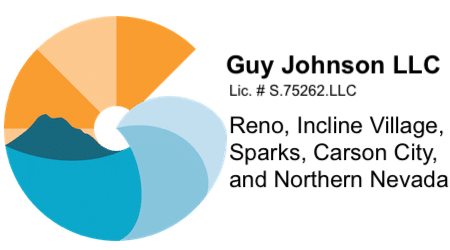The following is a guest article by blog reader, Misty Weaver. Misty Weaver is a partner with 5 Elements Design, a residential design firm that provides stock house plans and custom small house plans that are sustainable and family friendly.
Green, eco friendly, sustainable housing is all over the news right now for various reasons, but if you are just beginning a home search with your Realtor, you may not know what to look for. While there are homes that are rated "Green" or certified LEED by independent parties, there may not be many in your area. Looking for green features or opportunities to make small changes to a home to make it more eco friendly may be the easiest option. You can find a home with green features that will lower your energy costs, increase your indoor air quality, and continue to increase the value of your home long after you sign on the dotted line by looking for these green features.
Location and Siting of the Home – Look for a home that has southern facing windows for passive heating during the winter. If properly designed, a southern facing home will allow the sun’s energy to heat the home during the cooler months, while providing cooling features and shade with the use of trees or extended overhangs to block the sun when it’s higher in the sky during the summer. Taking advantage of the natural energy of the sun will help lower your heating and cooling bills with virtually no monetary investment.
If you are buying a home in or near a large city that offers mass public transportation, living near a transit station will not only help lower air pollution and possibly save you the cost of having a car, you could also qualify for lower insurance rates.
Insulation – Insulation helps a home retain indoor air temperature by not allowing the air inside the home to get out, or the air outside the home to get in. Insulation comes with an R value that indicates how strongly it will maintain the temperature in your home.
The higher the R value, the lower your utility bills. Compare insulation values of the homes you are considering, and if needed, consider how much it will cost to add insulation.
Windows – Energy rated windows will help control air and heat transfer in much the same way as traditional insulation. Larger windows also help reduce the amount of time you need to use electric lighting throughout the day, thus lowering your energy bill further.
Older homes often have windows that are no longer properly sealed.
Newer windows offer more energy savings, and double hung windows allow for more natural ventilation to lower cooling bills during the warmer months.
Flooring, Cabinetry, Wall Coverings – Looking for a home that includes eco friendly flooring, cabinetry and countertops may take awhile. Wood floors made from FSC lumber, tile, cork, or even cement are all green options, but if you are buying an older home and want to make it more sustainable it may not make sense to rip out old carpet or linoleum if they are in good shape as you are just sending these materials to the landfill. Cabinets, countertops, and fixtures from a bath or kitchen can be donated or recylced through non-profits such as Green Demolitions if you must remodel. Even CraigsList.org is a great alternative for giving away or selling unwanted interior products so they are used somewhere else instead of sitting in a landfill. Low VOC paints can be used to cut down on air toxins if the home has traditional paint currently, at very little cost.
Water – Tankless water heaters are a great green find in a home as they provide hot water on demand rather than heating water continually in a tank that loses the heat to the surrounding air. Rain catching systems that collect rainwater from the gutters for watering the garden and lawn are also green features you should look for, or find ways to implement in a new home purchase. High efficiency toilets or dual flush toilets cut down on the amount of water used throughout the day by two-thirds, and gray water systems can help even further by reusing water from the laundry, shower and sinks for flushing the toilet.
Appliances – Energy Star rated appliances can significantly lower utility bills. If you are looking at an older home that has many green features but the appliances need updated, there are currently rebates available for recycling old appliances if they are replaced with energy efficient models.
Landscaping – Natural landscaping can significantly cut down on water usage, so look for a home that has native plants that need minimal water and fertilizer. Natural plants are often better at preventing run off and erosion which will help protect your property as well. If you plan on building or need to redo your landscape, try to minimize grass areas, and consider a rain garden.
Working with your Realtor to find an existing green home, or the perfect lot to build a new eco friendly home, will go a lot smoother if you understand what to look for and what you must have. Understanding the costs for adding green features versus how much you will save in energy bills, will also help you make choices. Finally, don’t forget about tax benefits for going green, and local Energy Alliances that may help defer or even cover the costs of making improvements.











I just had a free Energy Audit performed by NV Energy, on my new home, and it was well worth it. On my 2005 house, the ceiling had insulation up to code, but that is far below the recommended amount for Zone 5 (N NV). Have the furnance “burners” adjusted every two years, which I had never even heard of before. And finally, keep open the doors and registers, even on bedrooms, dens, that you rarely use, mainly to let the furnance use the re-circulated warm air properly. To schedule a appt, it takes from 2 weeks to a month.
Jay, Thank you for the tips. Much appreciated.
Regarding NV Energy audit. If you are a Nevada customer of NV Energy you can sign up for MyAccount. It’s free and you can use it for online bill pay also. Anyway, there is an online energy audit you can fill out that shows you how your house compares to others in the area. If you are already at maximum efficiency or where ever. Takes less than 5 minutes and comes up on your home page in MyAccount. Highly recommended, as I found out I was already at maximum efficiency compared to other houses in the area. Now I can quit complaining about the gas bill. 🙂
We just installed photovoltaic panels to supply our own electricity. I just skimmed the original post, but I didn’t see that mentioned.
To me, PV is almost a no-brainer. Our gross cost for the 5 MW system that will replace about a $3,600 annual electrical bill was around $48K. With rebates from PG&E and the FIT credit our net was $25K. In ROI terms it’s around an eight year payback. But here’s the advantage. Many lenders (Wells for one) increase the appraisal of a home with PV by around $10K for each $1K of utility cost saved.
So, I’ve invested $25K to get an increased asset value of around $40K. So my question is, “why don’t people get a loan, install PV and make the loan payments from what they’ve saved in utility costs?” I’d much rather invest in increasing asset value than sending the money to a utility company.
Thoughts please.
Ed, interesting. Have you had them long enough to see how well they work in snow, overcast/cloudy days? I would be interested in hearing your comments regarding actual results versus some sales pitch which will always accounts for the unaccountable and never comes true in reality. I suspect your system is still connected to NV Energy as a backup.
I have a 3.85 kW system. The installed cost was about $27K and the after rebate and credit cost was $13K. It produces about 6000 kWh of electricity annually. (As a FYI for Sully, it actually produces more than the sales pitch.)
A 5 MW system would be monstrous and wouldn’t remotely fit on the roof of a house. The cost also seems to be unbelievably low. Are you sure you didn’t drop a zero?
With rebates most solar systems are OK investments but hardly great. Some cities now allow you to pay for them through your property tax bills which reduces the upfront costs. IMO the best thing about a solar system is that most people who get one cut their consumption by 20% or so just because they’re paying attention.